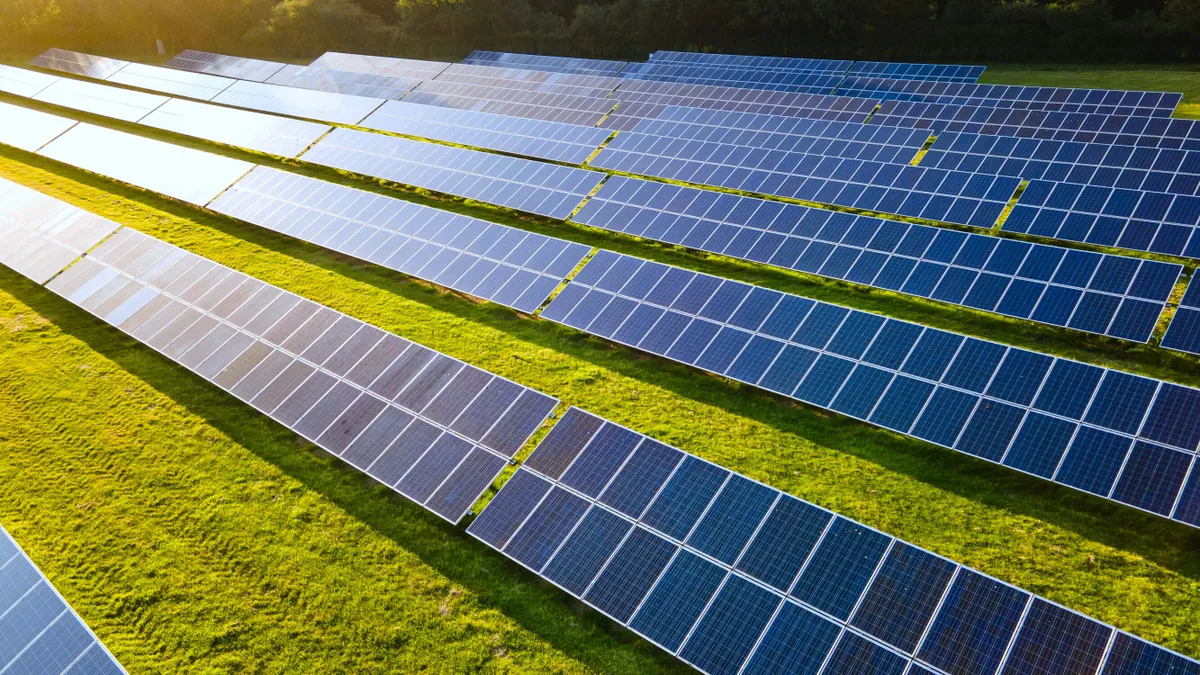As extreme weather increases and schools face funding uncertainties, adding renewable energy to K12 school districts presents a multitude of benefits to lessen the impact of these challenges. From reducing energy costs to providing safe, modern learning environments, more districts are investigating whether renewable energy is right for their building portfolio. In record numbers, they are discovering the answer is yes.
According to the U.S. Energy Foundation (a partnership of philanthropies focused on securing a clean and equitable energy future), nearly one in ten K12 public schools in the United States now use solar energy. Every year, more districts are also using electric buses and geothermal heat, too. The following are just a few of the benefits compelling districts to make these upgrades.
Economic benefits
Operations is usually the second biggest line item in school district budgets, driven by utility and maintenance costs. Schools using solar power now report offsetting their electric bills by up to 90 percent. They can reallocate the money saved into improving the educational experience for their students without having to ask traditional funding sources for more money.
While upgrading to renewable energy has upfront costs, a host of funding sources are available. Resourceful administrators stack many different funding sources to significantly reduce the initial costs of installing renewable energy infrastructure. Over time, the reduction in utility bills more than pays for any remaining installation costs, feeding those savings back into the budget.
Discover more funding strategies in our free guide, The Superintendent’s Guide to School Revitalization.
Educational benefits
When less of their budget is allocated to energy expenses, school districts can direct more of their budget on things that elevate learner outcomes. This includes adding new technology to classrooms, hiring to reduce student-to-teacher ratios, and tackling deferred maintenance lists.
In addition, installing and operating renewable energy can be a hands-on learning opportunity for students via the STEAM curriculum, as seen at Onsted Community Schools. This school used its new solar installation as the foundation for new curriculum on clean and renewable energy. These classes help prepare students for the workforce with hands-on learn opportunities for the growing demand for green jobs in communities across the country.
Community benefits
Times of crisis due to extreme weather require safe, temperature-controlled facilities, with consistent access to power. Combining renewable energy solutions like solar and geothermal with battery storage and microgrid solutions means more schools can remain open and even serve as places of refuge when everything else is closed. The entire community benefits when schools can keep their doors open and remain operational, even when the grid goes down.
Schools are typically some of the largest landowners and employers in their communities. Naturally positioned with leadership opportunities, schools making the switch to renewable energy serve as a powerful example to the community. A school district touches many lives beyond students and teachers – reaching the entire community at large to share in the benefits of clean, reliable energy.
Position your district as a community leader in renewable energy. Get actionable insights in The Superintendent’s Guide to School Revitalization.
Environmental benefits
With a much grander scale than the average home, school districts that add renewable energy generation can significantly change a community’s impact on the environment. In this way, shrinking a district-wide carbon footprint multiplies the money savings and the benefits of reducing fossil fuel usage for the entire community. Replacing legacy infrastructure with renewable energy propels school districts forward toward sustainability goals.
Public relations benefits
In today’s competitive education landscape, school districts can differentiate themselves positively and become destination districts. Being a school district on the way to net zero provides a triple benefit to the community:
- Appeal to homebuyers with modern, sustainable schools.
- Create budget stability, reducing the impact of rising utility costs.
- Boost test scores because providing safe, healthy learning environments helps learners better focus on their studies.
Renewable energy in school districts provides a plethora of opportunities for creating positive narratives and trust-building in the communities they serve while attracting new families.
The challenge and the solution
Time and money are challenges for all organizations, especially school districts. Designing custom renewable energy infrastructure requires careful planning, so partnering with an organization that specializes in energy efficiency and sustainability (specifically in schools) is important.
Energy Systems Group helps districts navigate the transition to renewable energy by connecting them with funding resources and assisting with design and implementation. Their expertise in this area comes from helping dozens of K12 districts all over the United States reduce their energy costs and improve energy reliability and resiliency.
Transform your district’s future with renewable energy solutions that save money, inspire students and strengthen communities. Download The Superintendent’s Guide to School Revitalization to explore practical strategies today.










